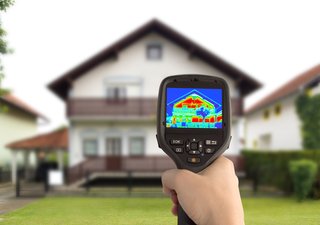Enhancing Comfort and Efficiency: The Importance of Home Insulation
Wiki Article
As energy costs rise and environmental concerns grow, homeowners are increasingly concentrating on improving the energy efficiency of the homes. One of the most effective ways to achieve this is thru proper home insulation. Insulation plays an important role in maintaining indoor comfort, reducing energy bills, and minimizing the environmental impact of heating and cooling. This article delves to the benefits of basement insulation wentzville, the different types available, and strategies for choosing and installing insulation at home.

The Benefits of Home Insulation
Energy Efficiency: Proper insulation decreases the amount of heat that escapes from your home in the winter and enters in the summertime. This helps your cooling and heating systems work better, leading to significant energy savings.
Cost Savings: By enhancing your home's energy efficiency, insulation is effective in reducing your energy bills. The initial investment in insulation can often be recouped through these savings within a few years.
Comfort: Insulation helps maintain a consistent indoor temperature, eliminating drafts and cold spots in winter and keeping your own home cooler in the summer.
Environmental Impact: Reducing energy consumption lowers your house's carbon footprint, leading to environmental conservation efforts.
Noise Reduction: Insulation also can act as a solid barrier, reducing the amount of noise that enters or leaves your house, making a quieter indoor environment.
Increased Property Value: Energy-efficient homes are increasingly popular by buyers. Good insulation can increase your own home's market value.
Types of Home Insulation
Fiberglass Insulation: One of the most common types, fiberglass insulation is made of fine glass fibers. It is obtainable in batts, rolls, and loose-fill forms. Fiberglass is non-combustible and resistance against moisture, rendering it a popular selection for many homeowners.
Spray Foam Insulation: This type of insulation is sprayed into walls, floors, and ceilings, where it expands and hardens. Spray foam provides excellent thermal resistance and can also help seal gaps and cracks, providing an air-tight barrier.
Cellulose Insulation: Made from recycled paper products, cellulose insulation is an environmentally friendly option. It is given fire-retardant chemicals and it is typically utilized in attics and wall cavities.
Rigid Foam Insulation: Rigid foam panels offer high insulating value and so are commonly found in walls, roofs, and foundations. They are made out of materials like polystyrene, polyisocyanurate, and polyurethane.
Mineral Wool Insulation: Also known as rock wool or slag wool, mineral wool insulation is constructed from natural minerals and industrial byproducts. It is fire-resistant, soundproof, and effective at insulating.
Reflective Insulation: This type of insulation uses reflective materials to bounce radiant heat away from your home, keeping it cooler. It is often used in attics to reduce heat gain.
Choosing the Right Insulation
Climate Considerations: The type of insulation you select should be ideal for your local climate. For example, homes in colder regions will benefit from higher R-value insulation to retain heat.
R-Value: The R-value measures an insulation material’s potential to deal with heat flow. The higher the R-value, the greater the insulation’s effectiveness. Your choice of insulation should meet or exceed the recommended R-value to your area.
Area of Installation: Different parts of your property may require several types of insulation. For instance, attics will benefit from loose-fill or batt insulation, while walls could be better suited to spray foam or rigid foam.
Budget: While some insulation materials could have a higher upfront cost, they could offer greater long-term savings through reduced energy bills. Consider your financial budget and weigh the original investment against potential savings.
Environmental Impact: If sustainability is really a priority, search for insulation materials rich in recycled content and low environmental impact, for example cellulose or mineral wool.
Installing Home Insulation
DIY vs. Professional Installation: While some insulation projects can be achieved by homeowners, others may need professional installation. Spray foam insulation, for example, typically requires specialized equipment and expertise.
Safety Precautions: When installing insulation, it’s important to wear protective gear such as gloves, masks, and goggles to prevent irritation from fibers or chemicals.
Sealing Air Leaks: Before installing insulation, seal any air leaks at your residence’s envelope. This increases the insulation’s effectiveness by preventing drafts.
Follow Manufacturer Instructions: Adhering to the manufacturer’s installation guidelines ensures optimal performance and safety.
Consider Upgrades: If your own home is older, you may want to consider upgrading your insulation to meet modern standards. This can significantly improve your own home’s energy efficiency and comfort.
Home insulation is often a key component in creating an energy-efficient, comfortable, and green living space. By understanding different types of insulation in addition to their benefits, you may make informed decisions which will improve your home’s performance reducing energy costs. Whether you ultimately choose to tackle the project yourself or engage a professional, purchasing proper insulation is really a smart choice that pays off in numerous ways.